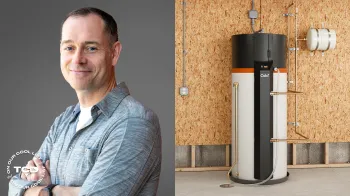The wildfires that ripped through Los Angeles County in January left a trail of destruction in their wake. As reported by Ohio Today, 29 people were killed, and the fires destroyed 50,000 acres as well as 16,000 buildings. While the short-term consequences speak for themselves, homeowners statewide will feel the long-term effects.
What's happening?
The disaster has led to a confrontation between leading home insurance providers and state regulators. Under California's Proposition 103, any rate hikes above 7% require public hearings if consumers challenge them. Newsweek reported that State Farm, the largest insurance provider in the Golden State, is seeking approval for a massive increase — 22% for homeowners and 38% for renters — in its insurance rates. Without the rate hikes, the company is threatening to cancel even more policies or leave the state entirely, per the publication.
The move has sparked an outcry from consumer groups who reject the company's stance that State Farm's solvency is in jeopardy without the rate increases. "State Farm is demanding a backroom bailout from California homeowners while concealing critical financial details," William Pletcher of Consumer Watchdog said, per Insurance Business.
Why is this important?
The fight between consumers and insurance companies is just one of the economic consequences of the climate crisis. As natural disasters become more frequent and destructive, it is increasingly difficult for insurance providers to cover homeowners at affordable rates. California is far from alone in this regard.
L.A. County is experiencing severe and extreme drought conditions, which contribute to more severe wildfires. Similarly, the World Wildlife Fund details that higher atmospheric temperatures lead to rising sea levels and a heightened risk during hurricane season. Tornadoes are another natural disaster made worse by the climate crisis.
What can be done about extreme weather?
The problem of extreme weather is significant but not insurmountable. Better and more equitable disaster management is one area for improvement, as marginalized communities are often hit hardest by natural disasters. As homes are rebuilt, disaster-proofing and stronger building codes could help mitigate the effects of future disasters. Japan provides an excellent example of how effective these measures can be.
Watch now: How bad is a gas stove for your home's indoor air quality?
Human activity, such as burning dirty energy sources, is the leading cause of the warming planet and the worsening extreme weather events that come with it. In the long term, turning to renewable energy sources such as solar and wind can help reduce risks. Even small individual and local changes can make a big impact. For many, the first step is learning more about critical climate issues.
|
Do you think home heating costs are higher than they should be? Click your choice to see results and speak your mind. |
Join our free newsletter for good news and useful tips, and don't miss this cool list of easy ways to help yourself while helping the planet.













